THE LEGEND OF ZELDA 2 リンクの冒険 – released 1/14/1987, developed and released by Nintendo
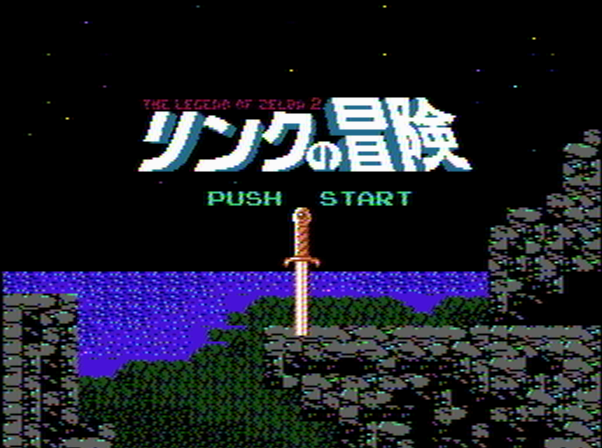
On my master list of console JRPGs this the 9th game. Out of those nine, only one of them (Dragon Quest) is the prototypical turn-based RPG that most people associate with the genre (particularly in the NES/SNES era). The other ones are adventure-style games (Zelda, Hydlide, Adventures of Valkyrie, Deadly Towers), action games that aren’t really RPGs (Druaga and Dragon Slayer), and one Wizardry-style maze game (Deep Dungeon).
The first Zelda game was one of those adventure-style games that I think many people do not consider an RPG, although I said in my previous post on the game that I’m not sure Japanese players at the time would have thought of it as fundamentally different from Hydlide or Adventures of Valkyrie.
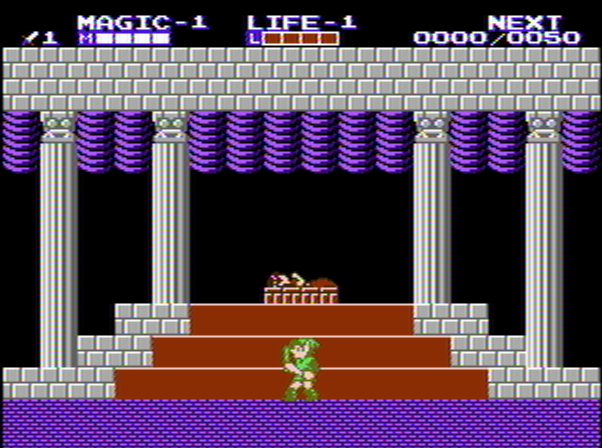
Zelda II was intended by Miyamoto to be a totally different game, and it is — most of the game occurs on 2D side-scrolling maps, with a top-down overworld map. RPG elements are more strongly tied into the game.
The game, like Zelda 1, was originally released for the Famicom Disk System. This was a short-lived Famicom add-on that allowed for larger games, cheaper production, and the ability to save your progress, and also allowed you to use “disk writer” consoles to get new games. Although the FDS sold very well, there were a number of technical problems with the system and piracy was rampant. Within a few years, the technology for producing the cartridges had improved and become cheaper, rendering the FDS obsolete.
As with the first Zelda, this game was released in the US on a cartridge with a battery backed save. There were a number of changes, but most of them were small graphical or audio changes. The only substantial change is to the XP and levelling method.
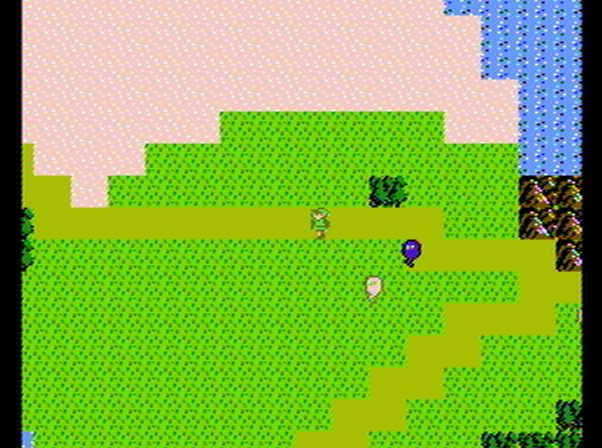
In both versions, you gain XP from beating certain monsters and finding “P bags”. When you hit a certain amount of XP you can level up one of three areas – Life, Magic, or Attack. Life acts essentially as a defense stat, and Magic lowers the amount of magic points a spell costs.
In the US version that most people are familiar with, the levels cost different amounts of XP — for instance, level 1 attack is 200 XP but level 1 life is only 50. When you gain the necessary XP to level up a stat, you can choose to skip that one and continue saving for a different stat. If you die, you lose a life and go back to the beginning of the screen. If you get a game over, you go back to the beginning area of the game and lose any XP you have, but keep your levels.
In the Japanese version, when you get enough XP to level, you can choose any of the three stats to level up. The levels are also much cheaper than they are in the US version. However, when you game over in the original JP version, all of your levels reset to the lowest level you have — that is, if you had Attack 4, Magic 3, and Life 2 and got a game over, all three levels would be set to 2. This creates a lot more tension around a game over, and also means you want to keep your levels as equal as you can.
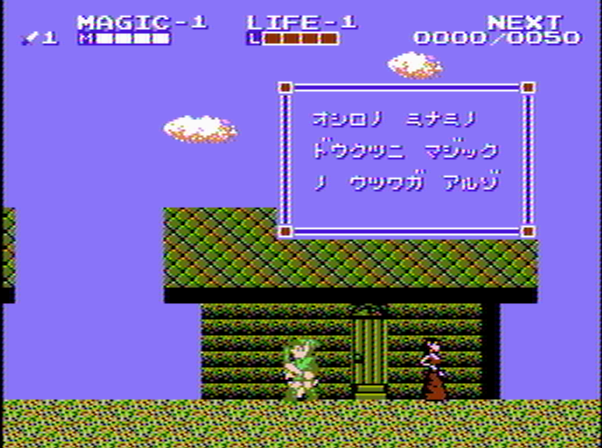
I did play (and beat) this game as a kid although I never liked it as much as the first Zelda game. This play was probably the first time I have touched the game since around 1990. I only played through the first palace.
The story involves Link trying to awaken Zelda (a different Zelda from the first game) by returning six crystals to temples and getting the Triforce of Courage. If he loses, Ganon will be reborn.
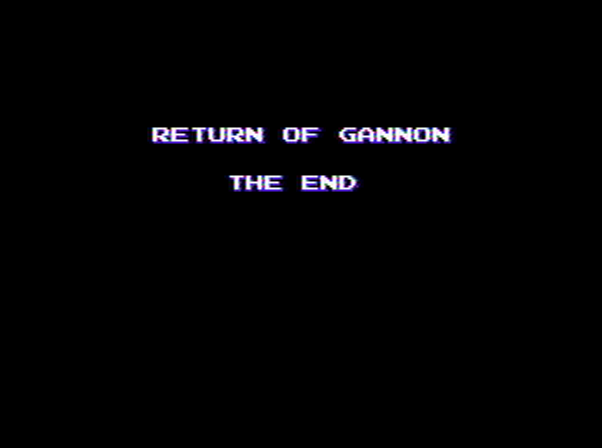
The overworld map is top down. When you step off the road, enemy icons start roaming around, and if you contact them, you get into a side-scrolling fight.
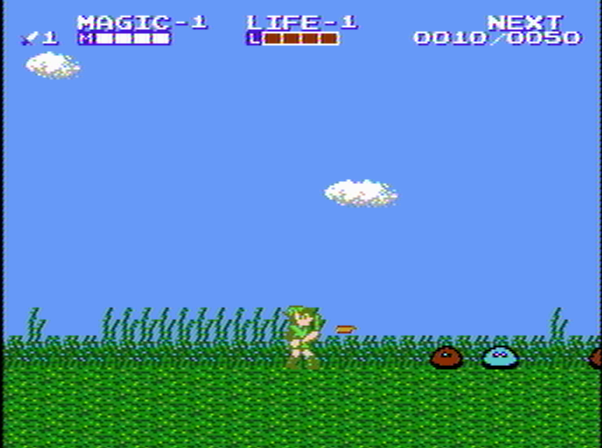
As in the first game, if you have max health you can shoot out a projectile from your sword.
The first task is to get the Shield spell from a nearby village and then head to the first palace in the desert. I had a strange problem where certain items were not appearing where they were supposed to be (a p bag, a heart container, and a magic container). Someone told me that I should use the third save slot, and when I did that the items were there. I’m not sure if this is an emulation bug or an issue with the dump of the ROM (the latter seems more likely).
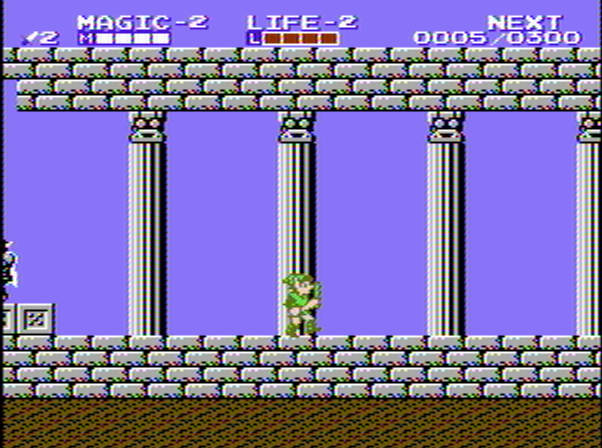
I was able to get level 2 in all the abilities (which only takes 200 total XP as opposed to 350 in the US version). The palace is challenging to me, especially the yellow armor knights. Each palace has an item (as in the original Zelda); this one has the candle that lets you see in the dark caves. You have to find keys and explore the area until you get to the boss, who is not that difficult. He’s a horseman and you just repeatedly jump and hit his head until he dies. Restoring the crystal gives you a level up.
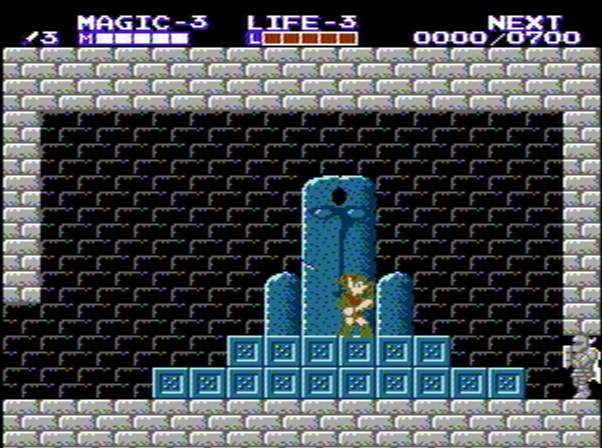
From there, it’s a while before the next palace — link needs to find a statue to learn the Jump spell, then go through to a new area of the land and find more items. This is where I stopped.
I don’t think this is a bad game, and I have a feeling that it holds up better than a lot of the action-RPG hybrids from this era, but we’ll see. There are a lot of them in the early slate of games. One thing I’ve really gained an appreciation for in doing this blog is how much certain games really did stand out among imitators and other things released at the time — it’s kind of amazing just how much better the original Zelda is than Hydlide, Valkyrie, and Deadly Towers.
No post next week, back on the 13th (I’m not sure if anyone actually checks on Saturday to see if I posted so this may not be a necessarily announcement…)